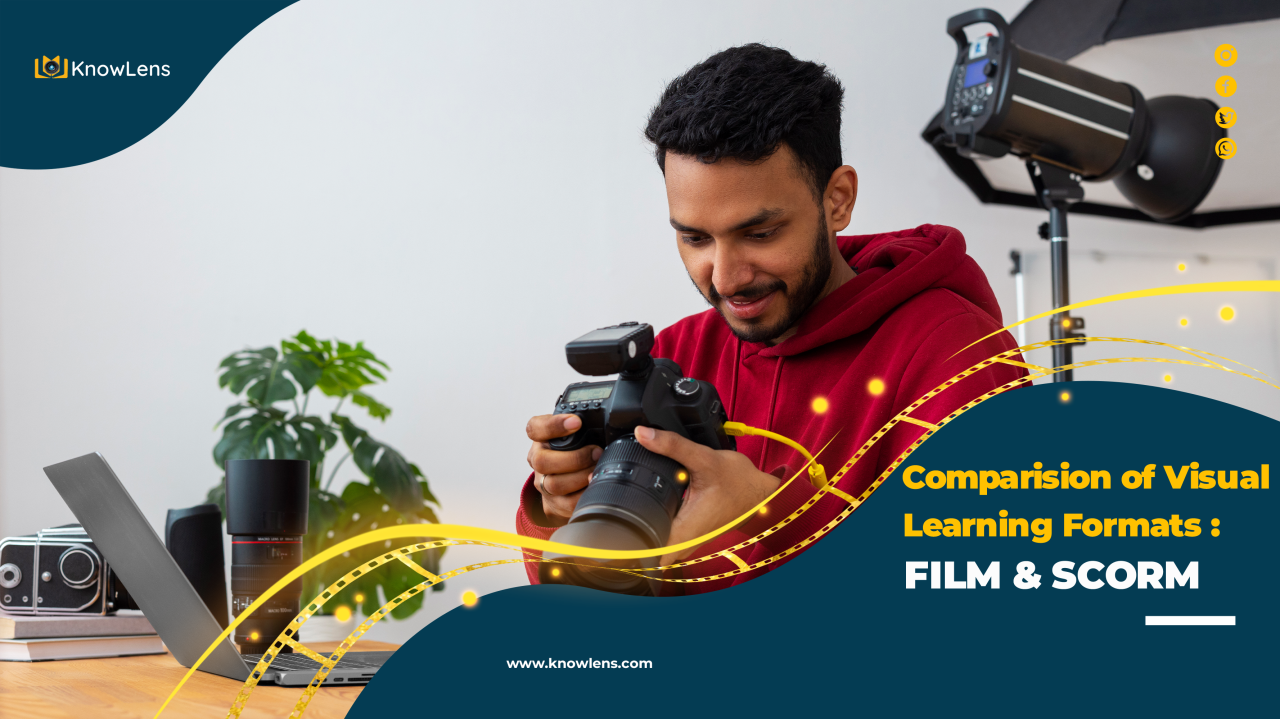As per a Training Magazine 2019 study, 88 % of large companies used video as part of the learning delivery methodology. Traditional E-learning methods using SCORM or equivalent continue to be crucial in most organization’s learning strategy.
In today’s perpetually shifting corporate training landscape, with information overload, lack of employee time and engagement, choosing the most impactful visual learning format is critical for increasing employee involvement and knowledge retention. This article focuses on the use of films and SCORM animations in product knowledge and behavioral training, analyzing their advantages and disadvantages.
E-Learning using SCORM
Clearly the dominant material available on most Learning Management Systems, Shared Content Object Repository Model (popularly called SCORM) compliant material is a popular option since it is simple to share and reuse across LMS systems. To improve learning retention, SCORM modules are interactive and often contain games, simulations, and other interesting components.
Advantages:
- Very useful for product knowledge, conceptual topics, compliance training
- Easily trackable in terms of individual progress
- Interactive features especially levels 1.5 to 2 or even gamified scorms enhance the user engagement for learning purposes
- Cost of development relatively low
- Easy consumption on both mobile and web
Disadvantages:
- SCORM modules may not be impactful enough in case of soft skills or behavioral training and companies generally have been preferring the classroom approach
- Some of the scorm content developed has historically been low on engagement leading to learner fatigue on LMS
- May not be amenable to easy microlearning on LMS systems
Films
Films have always been familiar to Indian audiences and core to their entertainment needs. Perhaps in some cases, audiences even drawing the right or wrong life lessons from films. The world of Learning & Development however has seen a more nuanced and gradual use of films in various formats. About a decade back, there were probably 3 major use cases for films:
- Scenes from Bollywood or Hollywood movies used in classroom training sessions to add interest. e.g. the famous movie “12 Angry Men “ or practically any scene from a movie.
- Simple animation films on concepts using infographics and sometimes character animations
- Simple instructional videos from experts who look into the camera and instruct along with supers
- Internally made role plays made by companies using employees as actors to illustrate and prescribe certain behaviours.
Let’s examine each of these from a learning context:
In this scenario, Knowlens pioneered the concept of films made specifically for high learning impact with strong edutainment value. These are in flexible formats – both long format web series like as well as micro learning friendly short videos.
These were characterized by:
Professional Actors
- Full production values using Professional crew
- Highly nuanced research and domain understanding
- Detail Storyline
- Choice of long and short video role-play formats
Given the higher costs involved, Knowlens created the concept of “off the shelf films”, which were curated for both classroom and online delivery. Technology offered the scale and homogeneity across the organization while films ensured the learning impact. This innovation of prepared ‘films” or web series helped in reducing the cost of development for the end customer. Development costs were subsidized across multiple customers making the high quality product affordable.
Custom Films
In case of many larger organizations, the management prefers to develop custom content as they have the budgets and resources to support such initiatives. These are viewed as capital expenditure and creating long term assets.
Summary
The organization training objectives, budgets and target audience determine which visual learning option is right for a defined learning need. Visual learning options are now accepted and a must for most companies.
Due to its scalability and interactivity, SCORM is the right option for effectively delivering procedural training and standardized a wide range of product knowledge across a broad workforce.
Film-based learning comes in various forms and is better at teaching behavior and skills; middle
Finally every visual training method has its use case and organizations need to find the right use.

